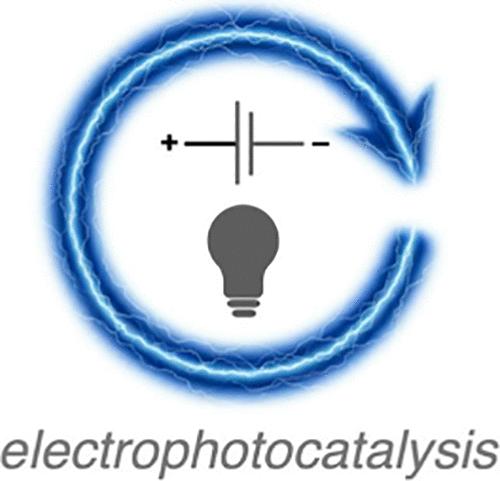当前位置:
X-MOL 学术
›
Chem. Rev.
›
论文详情
Our official English website, www.x-mol.net, welcomes your
feedback! (Note: you will need to create a separate account there.)
Electrophotocatalysis for Organic Synthesis
Chemical Reviews ( IF 51.4 ) Pub Date : 2024-10-23 , DOI: 10.1021/acs.chemrev.4c00464 Matthew C. Lamb, Keri A. Steiniger, Leslie K. Trigoura, Jason Wu, Gourab Kundu, He Huang, Tristan H. Lambert
Chemical Reviews ( IF 51.4 ) Pub Date : 2024-10-23 , DOI: 10.1021/acs.chemrev.4c00464 Matthew C. Lamb, Keri A. Steiniger, Leslie K. Trigoura, Jason Wu, Gourab Kundu, He Huang, Tristan H. Lambert

|
Electrocatalysis and photocatalysis have been the focus of extensive research efforts in organic synthesis in recent decades, and these powerful strategies have provided a wealth of new methods to construct complex molecules. Despite these intense efforts, only recently has there been a significant focus on the combined use of these two modalities. Nevertheless, the past five years have witnessed rapidly growing interest in the area of electrophotocatalysis. This hybrid strategy capitalizes on the enormous benefits of using photons as reagents while also employing an electric potential as a convenient and tunable source or sink of electrons. Research on this topic has led to a number of methods for C–H functionalization, reductive cross-coupling, and olefin addition among others. This field has also seen the use of a broad range of catalyst types, including both metal and organocatalysts. Of particular note has been work with open-shell photocatalysts, which tend to have comparatively large redox potentials. Electrochemistry provides a convenient means to generate such species, making electrophotocatalysis particularly amenable to this intriguing class of redox catalyst. This review surveys methods in the area of electrophotocatalysis as applied to organic synthesis, organized broadly into oxidative, reductive, and redox neutral transformations.
中文翻译:

用于有机合成的电光催化
近几十年来,电催化和光催化一直是有机合成领域广泛研究工作的重点,这些强大的策略为构建复杂分子提供了大量新方法。尽管付出了这些巨大的努力,但直到最近才真正关注这两种模式的联合使用。尽管如此,过去五年见证了人们对电光催化领域的兴趣迅速增长。这种混合策略利用了使用光子作为试剂的巨大好处,同时还利用电势作为方便且可调的电子源或接收器。对这一主题的研究导致了许多 C-H 官能团化、还原交叉偶联和烯烃添加等方法。该领域还使用了广泛的催化剂类型,包括金属和有机催化剂。特别值得注意的是与开壳光催化剂的研究,这些光催化剂往往具有相对较大的氧化还原电位。电化学提供了一种生成此类物质的便捷方法,使电光催化特别适用于这类有趣的氧化还原催化剂。本综述综述了应用于有机合成的电光催化领域的方法,大致分为氧化、还原和氧化还原中性转化。
更新日期:2024-10-23
中文翻译:

用于有机合成的电光催化
近几十年来,电催化和光催化一直是有机合成领域广泛研究工作的重点,这些强大的策略为构建复杂分子提供了大量新方法。尽管付出了这些巨大的努力,但直到最近才真正关注这两种模式的联合使用。尽管如此,过去五年见证了人们对电光催化领域的兴趣迅速增长。这种混合策略利用了使用光子作为试剂的巨大好处,同时还利用电势作为方便且可调的电子源或接收器。对这一主题的研究导致了许多 C-H 官能团化、还原交叉偶联和烯烃添加等方法。该领域还使用了广泛的催化剂类型,包括金属和有机催化剂。特别值得注意的是与开壳光催化剂的研究,这些光催化剂往往具有相对较大的氧化还原电位。电化学提供了一种生成此类物质的便捷方法,使电光催化特别适用于这类有趣的氧化还原催化剂。本综述综述了应用于有机合成的电光催化领域的方法,大致分为氧化、还原和氧化还原中性转化。






























 京公网安备 11010802027423号
京公网安备 11010802027423号